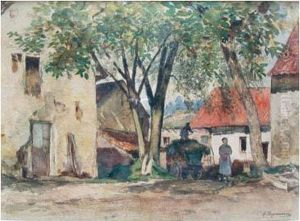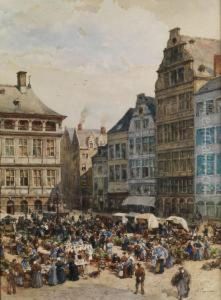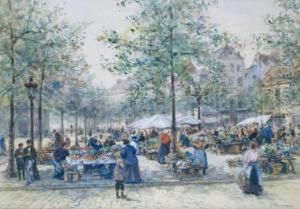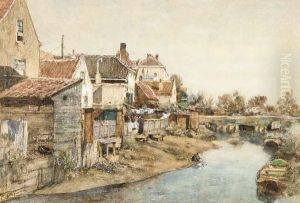Alphonse Pecquereau Paintings
Alphonse Pecquereau was a French painter and engraver born on September 10, 1826, in Angers, France. Best known for his landscape paintings, Pecquereau demonstrated an affinity for art from a young age. He pursued his education at the École des Beaux-Arts in Paris, where he trained under the guidance of prominent artists of that era.
During his career, Pecquereau's works were exhibited in various salons, including the famous Paris Salon, an annual exhibition that was the official art exhibition of the Académie des Beaux-Arts in Paris. His depictions of the French countryside and rural scenes were particularly appreciated for their attention to detail and the serene atmosphere they conveyed.
Pecquereau's style was characteristic of the mid-19th-century French landscape tradition, with influences from the Barbizon school, which emphasized painting nature in its own right and was a precursor to the Impressionist movement. Although Pecquereau did not achieve the same level of fame as some of his contemporaries, his works were nonetheless valued by art collectors and critics for their technical skill and the peacefulness they evoked.
Alphonse Pecquereau's artistic legacy is composed of a body of work that celebrates the bucolic landscapes of France. His paintings often feature pastoral scenes, rivers, and rural life that resonate with a sense of tranquility and harmonious natural beauty. He continued to paint throughout his life, contributing to the rich tapestry of 19th-century French art, until his passing on January 26, 1903, in Paris. Today, his works are held in various private collections and can be seen in museums that focus on this period of French art.



